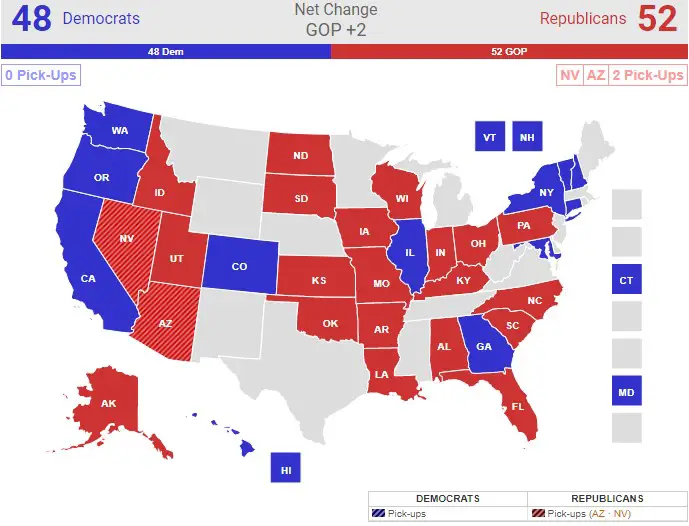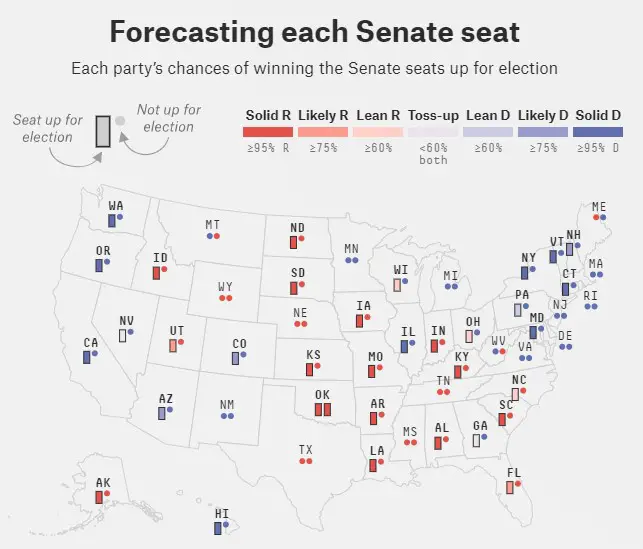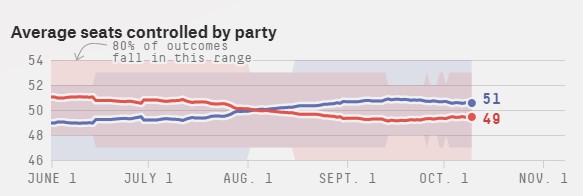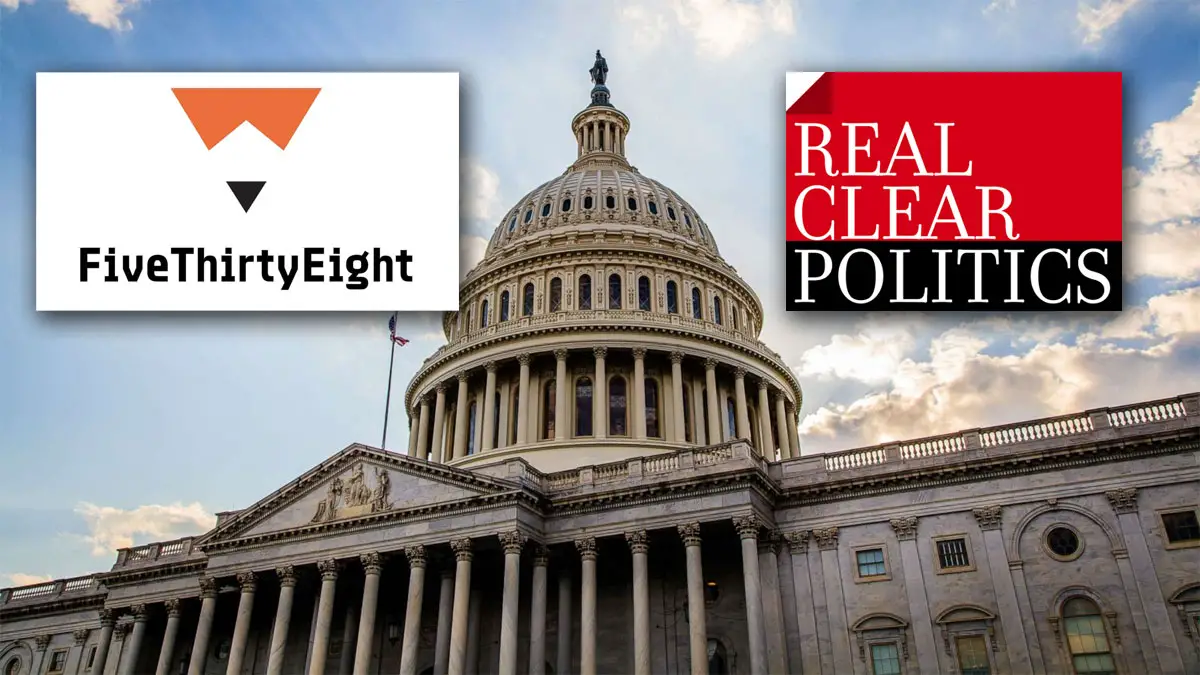Among two of the major election forecasters that produce models based on polling data, there has been a great disturbance in the force.
Usually, or perhaps on most occasions, election models are in agreement for the most part. After all, the polling data is what it is and unless you want to apply some sort of metric or account for bias, the numbers are taken at face value. At FiveThirtyEight and RealClearPolitics, two of the most-visited political poll aggregators on the web, the data seems to be producing two different conclusions.
The devil is in the details when it comes to how each site reaches a conclusion, and both conclusions are arguably reasonable. Here’s a look at what both sites are saying right now about the chances that Republicans capture the Senate or whether Democrats will retain power.
RealClearPolitics – GOP Wins Control
Projected Result: Republicans Win Control
Power Split: 52 (R) to 48 (D)
According to the RealClearPolitics (RCP) modeling, Republicans are projected to pick up two seats and take control of the upper chamber with a 52-48 majority. They will accomplish this, RCP predicts, by flipping seats in Nevada and Arizona, while also retaining Pennsylvania.
Here’s the RCP prediction map as of today which gives Republicans the Senate by winning three key races needed to produce a 52-seat majority:
 While the polling average doesn’t necessarily support Republican Senate victories in either Arizona or Pennsylvania, RCP says that inherent bias which underestimates GOP candidates in both states could produce a victory in November:
While the polling average doesn’t necessarily support Republican Senate victories in either Arizona or Pennsylvania, RCP says that inherent bias which underestimates GOP candidates in both states could produce a victory in November:
 This scenario assumes that support for Dr. Mehmet Oz in Pennsylvania and Blake Masters in Arizona is being undercounted by 5.9% and 2.2% respectively. If that’s the case, based on recent historical polling trends, then Republicans could outperform some state-level polls and take a two-seat Senate majority without much sweat. This outcome and view, however, is not shared by FiveThirtyEight.
This scenario assumes that support for Dr. Mehmet Oz in Pennsylvania and Blake Masters in Arizona is being undercounted by 5.9% and 2.2% respectively. If that’s the case, based on recent historical polling trends, then Republicans could outperform some state-level polls and take a two-seat Senate majority without much sweat. This outcome and view, however, is not shared by FiveThirtyEight.
FiveThirtyEight – Dems Hold Senate
Projected Result: Democrats Hold Control
Power Split: 49 (R) to 51 (D)
What makes the FiveThirtyEight (538) Senate model different from RCP? There’s more of a focus on the precise data than there is on adjusting for polling bias. Nate Silver, editor-in-chief of 538, says that polling bias exists but he does not believe it’s as much of an issue or historically predictable as RCP seems to think so.
Here’s the 538 Senate map projection for comparison. As you can see, they have Democrats prevailing in Arizona and Pennysvalnia while leaving Nevada as essentially a “toss up” that’s too close to call. They’re also unsure about the outcome of Georgia whereas RCP seems to think it will convincingly remain in Democratic hands:
 This model and resulting prediction would come out to a 51-49 majority for Democrats in November:
This model and resulting prediction would come out to a 51-49 majority for Democrats in November:
 If polls are to be taken as mostly “accurate” without any of the massive undercounting of Republicans witnessed in recent cycles, including last year by double-digits in New Jersey, then the 538 model seems reasonable given the latest Senate polling data.
If polls are to be taken as mostly “accurate” without any of the massive undercounting of Republicans witnessed in recent cycles, including last year by double-digits in New Jersey, then the 538 model seems reasonable given the latest Senate polling data.
Conclusion
So, which view is correct in this battle? Maybe the question is which view is more correct since either scenario seems plausible. A 52-48 Republican majority seems just as likely as a 51-49 Democratic majority. The thing that 538 seems to underestimate is just how close some of these races are and just how unpopular President Biden is on every single issue. Many polls show him underwater on everything from handling Covid-19 to foreign policy, to the border, and, of course, the economy and inflation.
If any of these close races, like Arizona, Pennsylvania, Georgia, or Nevada, hinge on the economy with anywhere from five to ten percent undecided, then it’s easy to see a path where even Dr. Oz, down by an average of 3.7 points, could squeak by with a one or two point victory.
The answer of who wins this battle of projections probably resides with which outcome you’d prefer to see happen in November. The truth is that both models could be wrong and we could wind up once again with a 50-50 split Senate resembling the current makeup but with chairs slightly rearranged.
If I had to bet, and I’m not a gambler, I’d split the middle and give Republicans a 51-49 Senate victory in November. Please don’t come back on Nov. 9 to remind me unless I’m correct, then I’ll remind you.
Donate Now to Support Election Central
- Help defend independent journalism
- Directly support this website and our efforts
